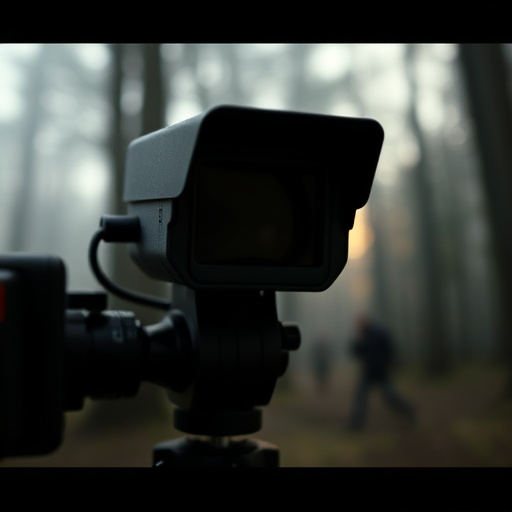Wireless spy cameras with cloud storage pose privacy risks. Smartphone tech helps detect hidden lenses and mitigate cloud-stored footage threats. Examine metadata, cloud logs for suspicious activity. Regularly inspect surroundings, use apps to track and evidence threats.
In today’s digital age, privacy concerns are at an all-time high. One subtle yet potent threat is wireless spy cameras hidden in everyday objects, streaming data to cloud storage. This article delves into the world of these covert devices, offering insights on understanding their workings, from signal transmission to metadata analysis. We explore mobile device capabilities for lens detection and highlight critical safety measures to safeguard personal spaces against potential spy camera surveillance.
- Understanding Wireless Spy Cameras
- Cloud Storage: A Hidden Threat
- Detecting Lenses on Mobile Devices
- Analyzing Spy Camera Metadata
- Safety Measures Against Spy Cameras
Understanding Wireless Spy Cameras
Wireless spy cameras have become increasingly sophisticated, often employing advanced technologies to capture and transmit footage discreetly. These devices typically operate via a wireless connection, allowing them to bypass traditional camera detection methods. Unlike wired counterparts, they don’t rely on physical cables for power or data transfer, making their presence harder to trace. Many modern wireless spy cameras are equipped with cloud storage capabilities, enabling remote access and real-time monitoring through internet-connected devices. This feature is particularly concerning as it allows potential intruders to store and share sensitive footage without leaving a trace on local devices. Understanding these cameras’ workings is crucial for identifying and mitigating their use in various settings, from homes and offices to public spaces.
Cloud Storage: A Hidden Threat
Wireless spy cameras have become increasingly sophisticated, often integrating cloud storage as a means to transmit and store footage secretly. This raises significant privacy concerns, as users may unknowingly share their personal spaces with unseen eyes. The convenience of accessing recordings remotely through cloud services can be a double-edged sword; while it allows for easy monitoring, it also opens doors for unauthorized access if proper security measures aren’t in place.
In the context of wireless spy cameras, cloud storage serves as both a potential solution and a hidden threat. It offers a seemingly seamless way to capture and review footage, but it introduces risks that are often overlooked. Ensuring the security and privacy of your data stored in the cloud is paramount, especially considering the ease with which malicious actors can exploit vulnerabilities.
Detecting Lenses on Mobile Devices
Modern smartphones have become powerful tools for both capturing moments and uncovering potential hidden threats, such as wireless spy cameras. With advanced image processing capabilities, mobile devices can now actively detect and identify unusual lens configurations. This feature is particularly useful in public spaces where cloud storage of footage from hidden devices could pose a privacy risk.
By leveraging machine learning algorithms, smartphones can analyze the camera’s sensor layout and distinguish between regular lenses and covert spy camera lenses. This technology enables users to take proactive measures against potential surveillance by identifying and mitigating the risks associated with wireless spy cameras in their environment.
Analyzing Spy Camera Metadata
When it comes to detecting hidden wireless spy cameras, analyzing the metadata associated with these devices is a powerful tool. Spy camera lenses often leave unique digital footprints, including information stored in EXIF data or cloud storage logs. By examining these metadata, users can uncover potential security breaches. For instance, timestamps, geolocation data, and even device identifiers can reveal when and where a spy camera was active.
Additionally, cloud storage services used by spy cameras can provide crucial insights. Many modern wireless spy cameras sync footage and settings to the cloud, leaving behind traces of their activities. Investigating these cloud storage logs allows users to identify suspicious patterns, such as frequent unauthorized access or unusual data transfer times, indicating the presence of a hidden surveillance device.
Safety Measures Against Spy Cameras
Staying one step ahead of wireless spy cameras is essential for maintaining privacy in today’s digital age. One effective safety measure is to regularly inspect your surroundings for any suspicious devices or hidden lenses. Smartphones can be powerful tools; use their cameras to scan walls, furniture, and corners where spy cameras might be concealed. Look for any unusual reflections or distortions that could indicate the presence of a lens.
Additionally, enable your phone’s image stabilization and low-light sensors during searches, as these features can help detect subtle camera feeds. While it’s challenging to identify all hidden cameras, being vigilant and proactive is key. Regularly updating your software and using apps that offer cloud storage for scanned images can also assist in tracking potential threats and providing evidence if needed.
Wireless spy cameras have become a growing concern, leveraging cloud storage to operate covertly. Understanding how these devices work and their ability to infiltrate mobile devices is crucial for online safety. By detecting lens anomalies and analyzing metadata, users can identify potential threats. Implementing robust security measures, including regular software updates and cautious data sharing practices, is essential to protect against these hidden cameras and ensure a safer digital environment.
